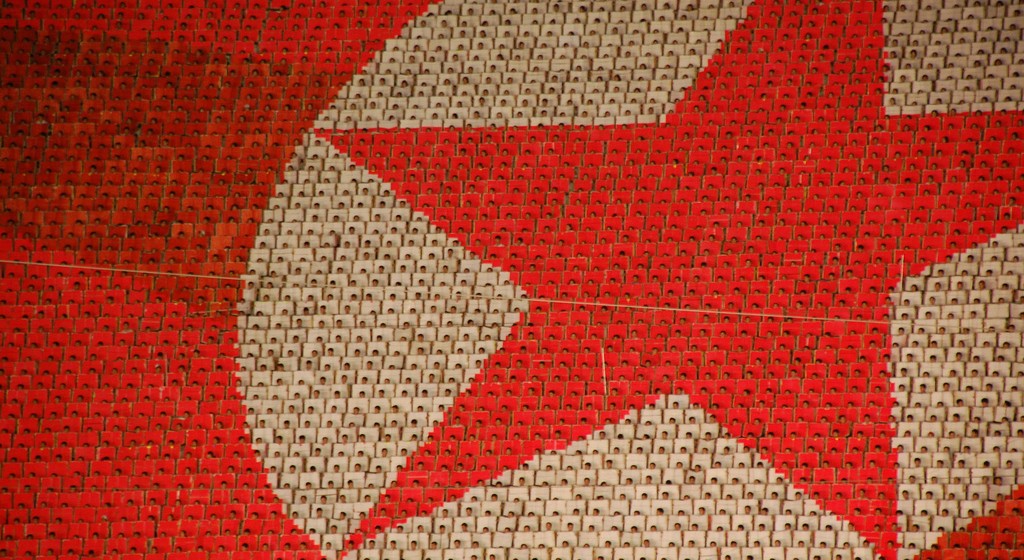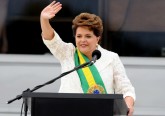Fourth nuclear test re-energises bellicose tone against the US and South Korea
A few announcements made by North Korea in the past two months have been making the international community uneasy. Last January, the country said it had successfully carried out a hydrogen bomb (H-bomb) test as an ‘act of self-defence’ against the US, claiming to have gained the capability to ‘wipe out the whole US territory’. In February, Kim Jong-un’s regime launched a satellite into space in a movement considered by specialists as a cover up for a ballistic missile test.
Albeit Pyongyang tends to overstate its accomplishments, the satellite launch and the alleged detonation of a hydrogen bomb represent, combined, a considerable leap for North Korea’s military capabilities. If converted into a ballistic missile, the rocket used to place the satellite in orbit could reach the whole US continental territory.
In this sense, how dangerous is North Korea militarily?
Even though North Korea is surrounded by secrecy, it is useful to analyse the country’s estimated nuclear capacity in order to address the question. It is believed that Pyongyang had up to eight plutonium based warheads as of 2015. The country could also have enough material to an additional 4-8 uranium based warheads. Some Chinese analysts go even further to suggest that the North Korean arsenal could reach up to 20 warheads.
In the past few years, North Korea reactivated a reactor previously used to extract plutonium, besides unveiling a centrifuge facility that could be used to enrich uranium to high levels. Whilst there is no confirmation about how these facilities have been used by the government, theoretically, they would enable the production of new warheads as long as there is enough base materials (e.g. uranium) available.
But what is the destructive power of the North Korean arsenal? In 2006, the country’s first nuclear explosion measured less than one kiloton. Therefore, less than 1/10 of the energy released by the nuclear bomb dropped on Hiroshima (Japan) by the US in 1945. Each kiloton amounts to 1,000 kilos of TNT.
Different sources estimate that North Korea’s 2013 nuclear detonation had up to a 10 kilotons yield. This is nearly half of the energy released by the bomb dropped on Nagasaki (20 kilotons) and 2/3 of Hiroshima’s (15 kilotons) power. Together, the bombs launched over Japan killed about 140,000 people, mostly civilians. Thus, North Korea has yet to develop a device that equals the power of the bombs detonated by the US over 70 years ago.
A hydrogen bomb is significantly more powerful than an atomic bomb (A-bomb). In 1961, the Soviet Union detonated the “Czar”, the most powerful nuclear bomb ever tested, which measured 50,000 kilotons. On the other hand, estimates put the North Korean alleged H-bomb detonation in just six kilotons, a poorer result than the 2013 atomic test.
Kim Jong-un’s regime claims it has successfully tested a miniaturised H-bomb, which brings up concerns that the country might be getting closer to acquiring the technology to make warheads small enough to fit into ballistic missiles. However, specialist shed doubts over both possibilities, arguing that a miniature H-bomb is still distant from Pyongyang’s technical abilities. There are also claims that the government actually tested a ‘middle stage device’ between an A-bomb and an H-bomb. The device tested by North Koreans would be a ’boosted’ A-bomb injected with tritium, a radioactive form of hydrogen. Such a scenario would represent an advance in North Korea’s nuclear capabilities, but it still not a thermonuclear weapon.
Furthermore, having nuclear weapons means little if one does not have the equipment to make proper use of them. North Korea has carried out ballistic missile tests, but there are still doubts if the country has the technology to make warheads small enough to be mounted on missiles.
This conclusion, however, is not unanimous. In October 2015, Bill Gortney, a top admiral of the US military, said he agreed with US intelligence assessments that North Korea had the ability to miniaturise its warheads and to install them on a rocket that could reach the country’s territory. Yet Gortney highlighted that the US was prepared to intercept attacks of this nature.
The launch of the satellite Kwangmyongsong-4 last February seems to back up Gortney’s analysis. North Korea argues that the satellite is part of its space programme, categorising it as merely scientific. On the other hand, the US, China and South Korea believe that the launch aimed to develop inter-continental ballistic missiles. North Korea is banned by the UN from carrying out ballistic missile tests and space launches.
Reports say that the rocket used to put the satellite in orbit can carry up to 500 kilos (far more than a rocket tested in 2012), which would be enough to convey nuclear warheads. The new missile may have a range of as much as 13,000 kilometers – enough to reach any part of continental US.
It is still unknown, however, if Pyongyang has developed the technology that allows the missile to re-enter the atmosphere, which is crucial to convert it into a weapon. Besides that, North Korea’s lack of access to the most advanced military technology complicates the assembly process of the missile that has to be put together on a very large, fixed launch pad. Thus, it could be easily destroyed in a preventive attack should a conflict arises in the region.
In this context, the US has announced a plan to build a missile defence system in South Korea ‘as soon as possible’ – a move that would face resistance from China. Thus, even if North Korea manages to develop the technology to launch nuclear ballistic missiles, it is likely that the US and Seoul would be able to intercept them.
Moreover, the North Korean arsenal – apart from lacking significant power – is far too small in comparison to those of the five major nuclear powers. China has 260 warheads; France, 300; UK, 225. Russia owns 1,582 warheads ready for use and installed in ballistic missiles, submarines and bombers, while the US has 1,597 warheads in the same conditions. Overall -between deployed, active, and awaiting dismantlement- Moscow holds 7,700 warheads and the US, 7,100.
In this sense, North Korea would be in extreme disadvantage in a nuclear conflict against the US. Besides having the ability to intercept missiles of premeditated attacks from Pyongyang, the US also has more than enough warheads to annihilate North Korea. Therefore, such a prognosis would be a powerful deterrence to prevent Kim Jong-un from ever using his nuclear weapons.
Putting aside North Korea’s nukes, the country could still pose a high risk to South Korea in the case of a ground invasion. Pyongyang has the fourth largest military in the world, with 1,2 millionactive soldiers (plus 7,7 million reservists) and heavy artillery equipment. South Korea, on the other hand, only has 690,000 soldiers, being in a numerical disadvantage of 3 to 2.
The North also owns more weapons, ships, planes and missiles. Yet, South Korean troops are very well trained and the country’s weaponry is quite modern, mostly provided by the US. As opposed to the North Korean equipment, the majority of which are old and outdated.
Apart from that, in order to get to South Korea’s territory, the North Korean troops would have to defeat the 28,000 American troops stationed at the Demilitarised Zone that divides both countries. These troops are supported by an additional 40,000 easily accessible from Japan and the military base in Guam.
Pyongyang could still use a ‘dirty‘ nuclear bomb by installing raw nuclear material in short range missiles aimed at Seoul. Such attacks would probably lack efficiency, but arguably would create mayhem in the South. North Korea could also use its vast arsenal of chemical and biologicalweapons against the South.
All of these scenarios would possibly result in conflict with the US presence supporting South Korean troops. Without China’s back up, North Korea would hardly be able to resist its adversaries’ superior military and economic capabilities.
In this sense, would China – and its 2.3 million soldiers (the largest army in world) – be willing to rescue North Korea? Both countries are allies, but Beijing has shown a fair amount of dissatisfaction with Kim Jong-un’s regime. China opposed January’s nuclear test and accepted to impose new sanctions on Pyongyang. Furthermore, in the past three years, China has had six summit meetings with South Korea and none with North Korea, which might indicate that Beijing values Seoul more.
Thus, in the case of a conflict ignited willfully by North Korea against the US and/or South Korea, it is unclear whether China would be willing to support Pyongyang. It is more likely that Beijing will try to use its influence over North Korea in order to prevent the eruption of a war in the Korean peninsula, thus, keeping the US distant from its borders and avoiding a massive wave of North Korean refugees knocking on its doors.
China could also be discouraged to support North Korea in a possible conflict because rescuing Pyongyang would very likely mean being in the opposed side of US. Therefore, this would bring the nuclear concern back to the picture. Both China and the US are nuclear powers, but the latter has far more potent nuclear weapons. One could also argue that the US would try to avoid using nuclear weapons against North Korea in the case of a retaliation attack in order to prevent larger tensions with Beijing and more risks to South Korea.
In this sense, despite the constant North Korean threats directed to the US, specialists believe that a possibility of a premeditated attack from Pyongyang to US, Japan or South Korea is almost null. A North Korean attack would result, likely, in the destruction of most of the country by US and South Korean troops, as well as in the termination of the Kim’s family dynasty. This picture is powerful enough to dissuade the communist regime from using its nuclear weapons.
However, having such weapons guarantee the country some capital to negotiate with the international community, aside from bragging about a military superiority over Seoul. In this context, Pyongyang could at any time play with a casual intention of deactivating at least some of its nuclear programme in exchange of economic or energetic support, for instance. Or even food supplies.
Even though the advance of the North Korean nuclear programme helps to maintain the country’s bellicose rhetoric, it does not mean, by itself, an increased chance of a war in the Korean peninsula. The high likelihood of a defeat of North Korea to the US and South Korea, followed by the implosion of the country, would be more than enough to deter any impulses of Pyongyang from using its nuclear weapons.
Special Politike Series
 This article is part of our Politike Series. As part of this special series, OxPol will publish a selection of articles from Politike, a Brazilian website associated with the magazine CartaCapital. Politike will also be publishing articles from OxPol, which will be available at http://politike.cartacapital.com.br/oxpol/.
This article is part of our Politike Series. As part of this special series, OxPol will publish a selection of articles from Politike, a Brazilian website associated with the magazine CartaCapital. Politike will also be publishing articles from OxPol, which will be available at http://politike.cartacapital.com.br/oxpol/.






